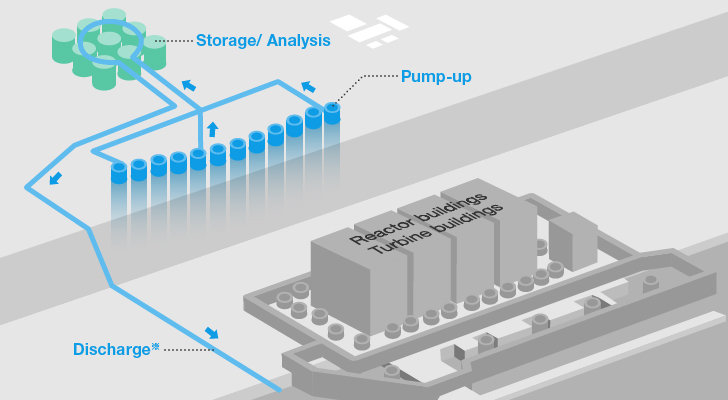Decommissioning Plan of Fukushima Daiichi Nuclear Power > Plan & Action > Major Initiatives for Water Management > Groundwater Bypass System
The groundwater bypass, one of several strategies being employed to reduce the accumulation of contaminated water at the plant, aims to intercept clean groundwater as it flows downhill toward the sea, and reroute it safely around the facility.
The water's quality is monitored regularly by an independent third party using safety and environmental standards which is significantly more stringent than either the limit set by the government or even the standard for drinking water established by the World Health Organization. Final agreement on the ocean discharge were made with the government, Fukushima Prefecture and the Fukushima fishermen's union.
Since its start of operation on May 21 2014, the groundwater bypass is estimated to have been reducing the amount flowing into the building basements by up to 100 tons per day according to the analysis done in 2014. The bypass will help reduce the volume of water that becomes contaminated and then needs to be cleaned and stored on site.

*The discharge will only be implemented after confirming that the water quality is well within the drinking standard set by the World Health Organization.

Radioactive nuclide analysis of pump wells and temporary storage tanks is carried out on a regular basis. In addition, to confirm that there is no impact on the ocean, sampling at the time of water discharge and the measurement of radioactive concentration in the premises of the nuclear power station as well as its neighboring area including the inner and outer ports are performed.
© Tokyo Electric Power Company Holdings, Inc.